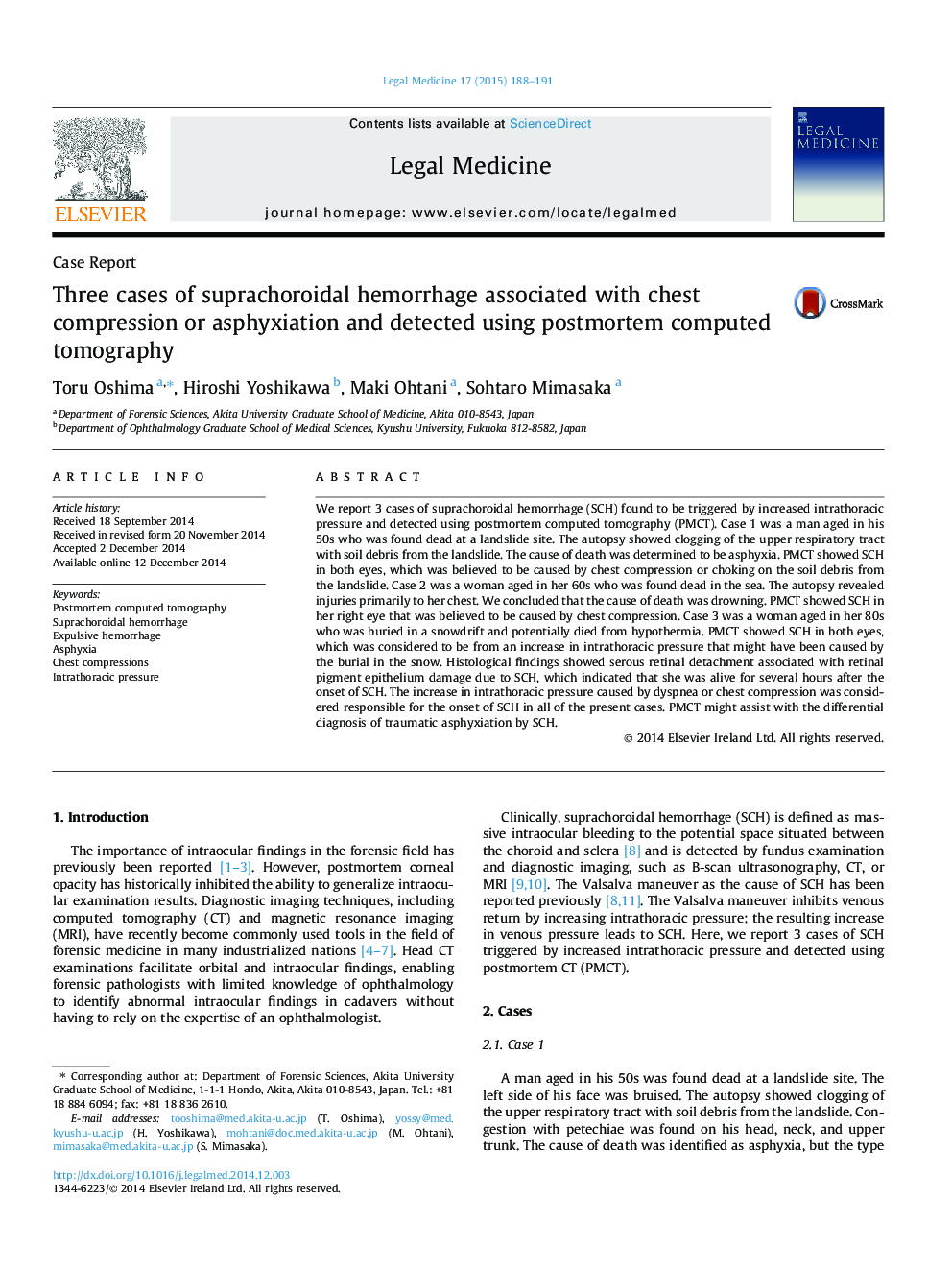| کد مقاله | کد نشریه | سال انتشار | مقاله انگلیسی | نسخه تمام متن |
|---|---|---|---|---|
| 103664 | 161397 | 2015 | 4 صفحه PDF | دانلود رایگان |
• We report 3 suprachoroidal hemorrhage (SCH) cases caused by the increased intrathoracic pressure.
• SCH was detected using post-mortem computed tomography (PMTC).
• PMTC might assist with the diagnosis of traumatic asphyxiation by SCH.
We report 3 cases of suprachoroidal hemorrhage (SCH) found to be triggered by increased intrathoracic pressure and detected using postmortem computed tomography (PMCT). Case 1 was a man aged in his 50s who was found dead at a landslide site. The autopsy showed clogging of the upper respiratory tract with soil debris from the landslide. The cause of death was determined to be asphyxia. PMCT showed SCH in both eyes, which was believed to be caused by chest compression or choking on the soil debris from the landslide. Case 2 was a woman aged in her 60s who was found dead in the sea. The autopsy revealed injuries primarily to her chest. We concluded that the cause of death was drowning. PMCT showed SCH in her right eye that was believed to be caused by chest compression. Case 3 was a woman aged in her 80s who was buried in a snowdrift and potentially died from hypothermia. PMCT showed SCH in both eyes, which was considered to be from an increase in intrathoracic pressure that might have been caused by the burial in the snow. Histological findings showed serous retinal detachment associated with retinal pigment epithelium damage due to SCH, which indicated that she was alive for several hours after the onset of SCH. The increase in intrathoracic pressure caused by dyspnea or chest compression was considered responsible for the onset of SCH in all of the present cases. PMCT might assist with the differential diagnosis of traumatic asphyxiation by SCH.
Journal: Legal Medicine - Volume 17, Issue 3, May 2015, Pages 188–191
